🤓 The 2026 Local Search Ranking Factors are here!! Check out the report!
🤓 The 2026 Local Search Ranking Factors are here!! Check out the report!

Day 2 of our Local Search Summit was filled with lessons in link building, GMB suspensions, technical SEO, local services ads, email marketing, and more. Today we are shining a spotlight on the technical side of location pages, local search for hotels, and how you can build relevance for your business. We did not scrimp on any of the details here! Enjoy all the gems from just a few of today’s spectacular presentations. You can also catch up on Day 1 here or fast forward to Day 3.
#WLSS Day 2 Talk Showcase:
Want to deepen your knowledge and learn new tactics and strategies to improve your rankings and conversions from local search? Then our Whitespark Local Search Summit video bundle was made for you! For $199USD you will get access to all of the talks from 2021 and 2020.

This presentation is most definitely geared toward the more technical-savvy as well as enterprise and multi-location businesses, but there are a lot of gems for everyone and you definitely want to take some time to dive into this topic. ==We know location pages are important and many enterprise businesses have terrible location pages (sad, but true). Analyzing location pages at scale is hard! So how do we analyze these pages at scale without going crazy? Follow Rachel’s three step process to success:
Location pages are templated, so if you uncover a technical issue on one page, it’s likely affecting other pages too.
Start by running a full site crawl, using (you guessed it!) DeepCrawl. Other options include Screaming Frog or SiteBulb. You’ll want to include:
*You may have your city or state name in your URL, title or header – if you do, you’re fine. If you don’t, you’ll need to use a Regex Extraction (or XPath) to pull in the city and state information. 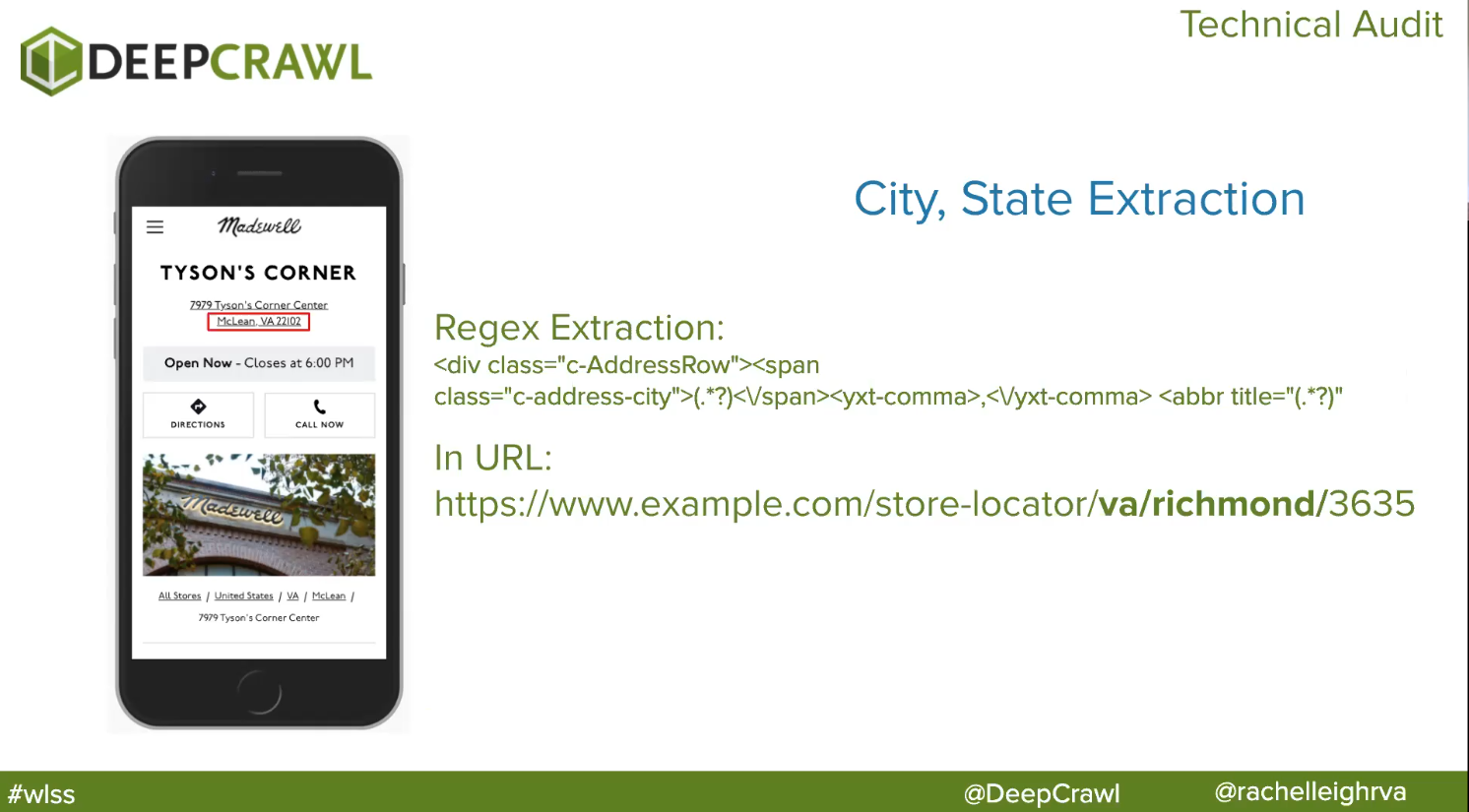 Now that you have that, run your crawl and perform the technical audit.
Now that you have that, run your crawl and perform the technical audit.
Common Issues for Enterprise Locations
#1. Location Pages Don’t Exist – There’s no individual static URLs for each location, instead one main location page that has all the information for all the locations. This is a terrible user experience – they click to your GMB profile only to be sent to a landing page where ALL the information is stored. Plus it’s terrible for bots too.
#2. Location Pages Aren’t Discoverable – They exist, but no one can find them. If they are not added to your sitemap, that means Google is relying on other sources like backlinks, internal links, and GMB to find your location pages.
User input is needed on the site to populate with the location pages. For example, you’re required to put in your postal/zip code in order for the page to appear. This is a fine experience if there are other ways to access the pages, but more often than not, entering your location is the only way to get to the pages. And bots are not inputting that data!
#3. No Internal Links to Location Pages 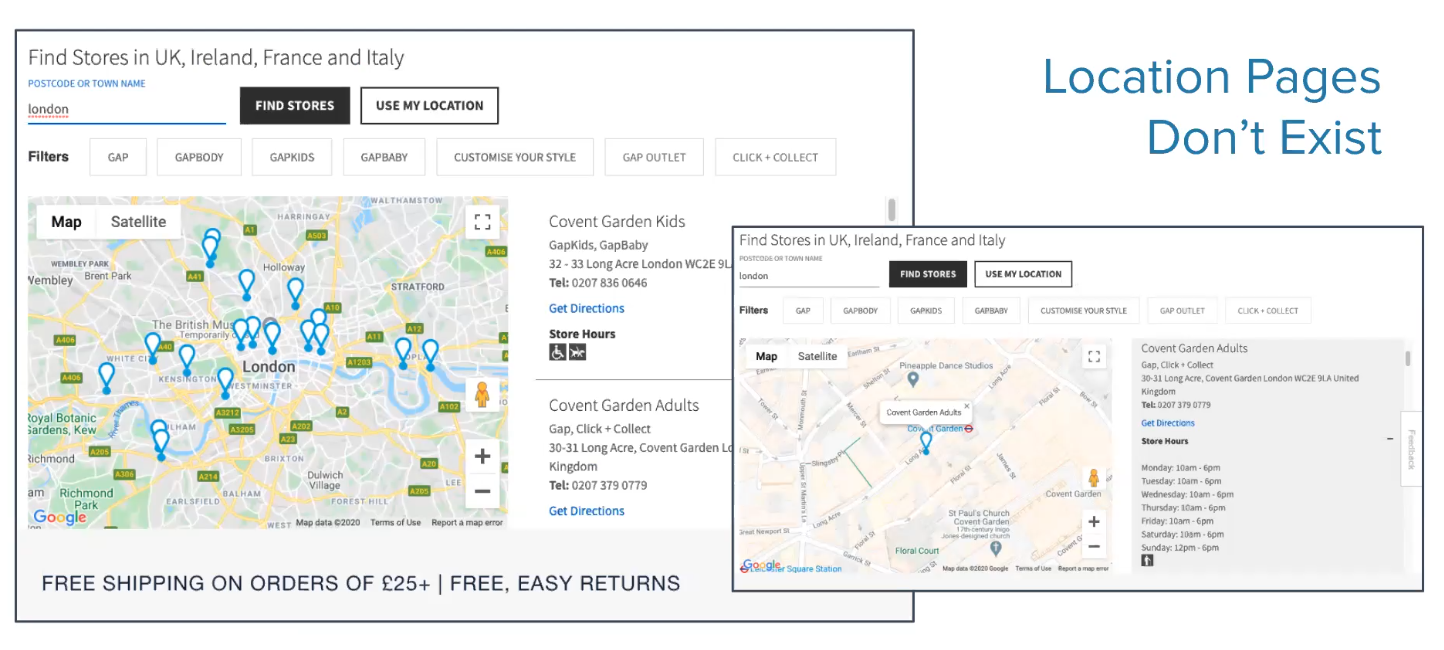 In the example above, there are over 4,506 location pages but only 27 of them have links. That’s not great for the discoverability of those pages. Make sure you have internal linking to your location pages.
In the example above, there are over 4,506 location pages but only 27 of them have links. That’s not great for the discoverability of those pages. Make sure you have internal linking to your location pages.
#4. Duplicate Versions of Location Pages
You’ll see pages with a trailing slash and without a trailing slash; title case and lower case; index-able parameters… most of these things can be fixed by simply having proper canonical tags on the site.  #5 Internal Links to Non-Canonical URL
#5 Internal Links to Non-Canonical URL
Sometimes, the canonical tags will be set up correctly but all the internal links will be to the non-canonical URL.
Make sure you’re always linking to the canonical version of the URL.
#6. GMB Profiles Not Linking to the Correct Page
While this seems really simplistic, your GMB profile needs to link to its specific location page, not the main location page or homepage, and please don’t link to a 404 page.
#7. Missing or Invalid Schema
Every single page should have local business markup. If you have reviews or breadcrumbs or FAQs, you should put that schema on the page too. You can check the validity of your data in the Rich Results tool or in Google Search Console.
#8. Missing/Poor Titles, Meta Descriptions, and Headers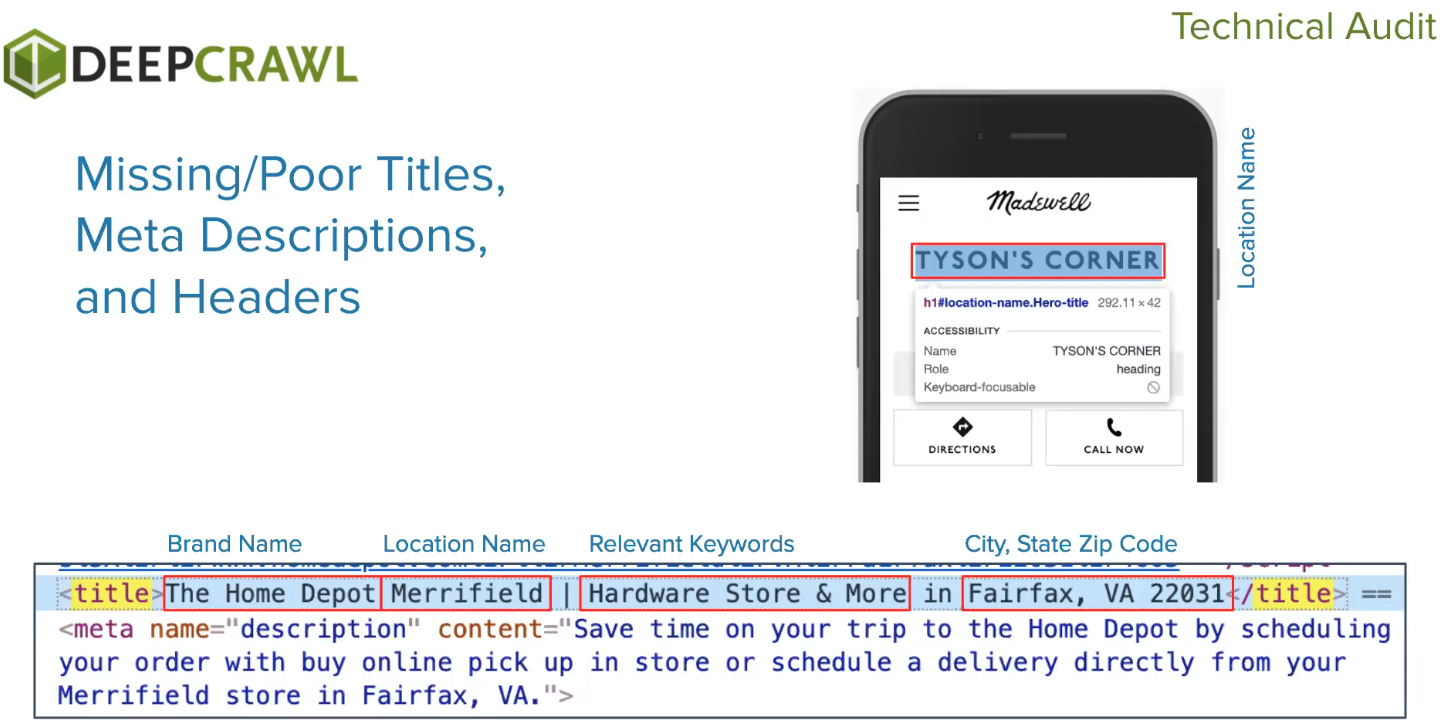 We see missing titles or titles that only have the brand name all the time. The Home Depot is an example of a really good title. It has the brand name, location name, relevant keywords, and location with city, state and zip code. It’s critical to have all these identifying information elements in your titles.
We see missing titles or titles that only have the brand name all the time. The Home Depot is an example of a really good title. It has the brand name, location name, relevant keywords, and location with city, state and zip code. It’s critical to have all these identifying information elements in your titles.
H1s (main header) often will have the brand name, but it should be what is relevant to the page. For a location page, your H1 should include the location name.
What’s Next?
Since some pages will need extra love, they are extra sad pages. If you go into Google Search Console and sort your location pages by clicks highest to lowest, what you’ll likely find is your highest population cities are the ones with the most clicks. This is indicative of population and not actually performance.  Population!= Performance but what you will likely find is that your highest population cities are the ones with the most clicks. To identify which location pages actually need the extra love, we’re going to have to do some math.
Population!= Performance but what you will likely find is that your highest population cities are the ones with the most clicks. To identify which location pages actually need the extra love, we’re going to have to do some math.
Start By Collecting Data
Do The Math
#1. Create a new spreadsheet and pull in your GSC data: landing page URL, Clicks, and Impressions.
#2. Create a second tab and pull in your crawl data – Crawl URLs and City + State Data
#3. Data Manipulation – You want to end up with your city and state name side by side (Column G in the image below). You want the full state/province name in your spreadsheet, so if you have an abbreviated code you will want to change that to the full name (for example, MA to Maryland).
#4. Go back to your GSC tab and use the Vlookup function to pull the City + State data from the crawl data tab into your GSC tab.
#5. (Hardest math step here) Create a distribution model based on population size, then you will assign a multiplier value to each bucket. The goal of the multiplier is to multiply the clicks and impressions to equalize things across the board so that you can identify performance and not population.
#3.
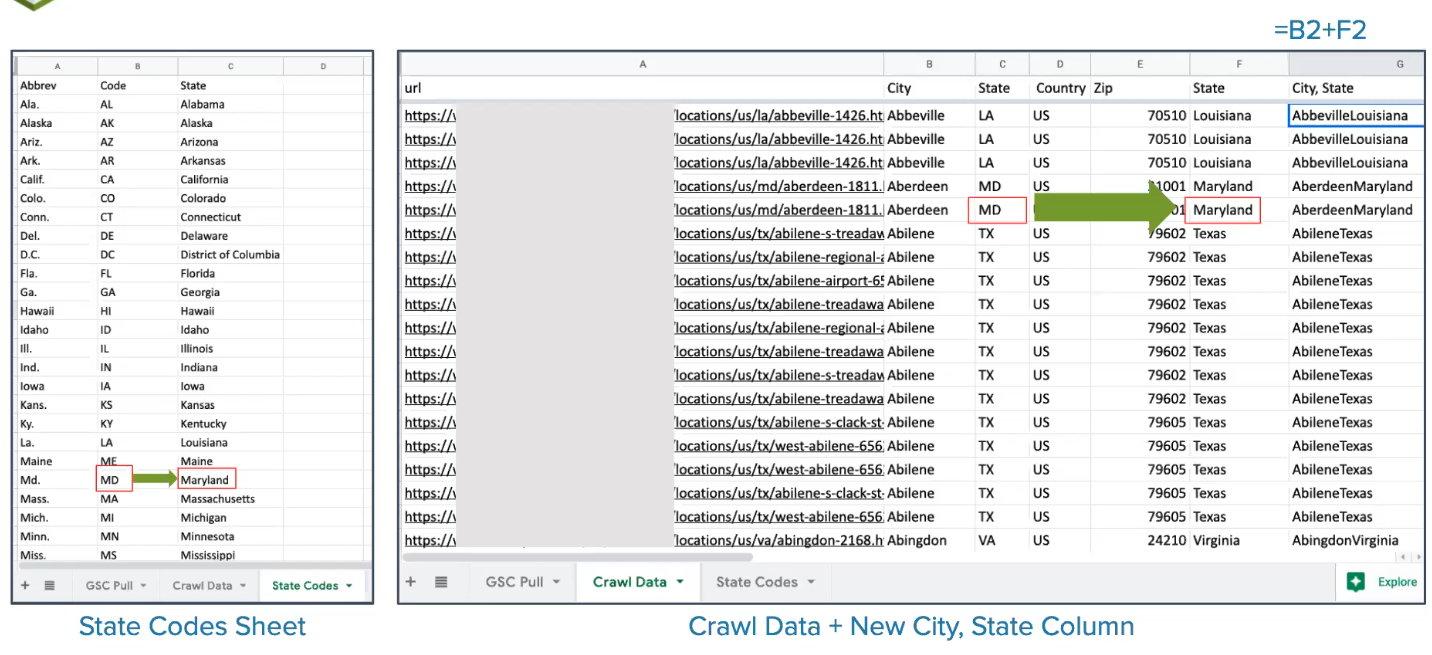
#4.
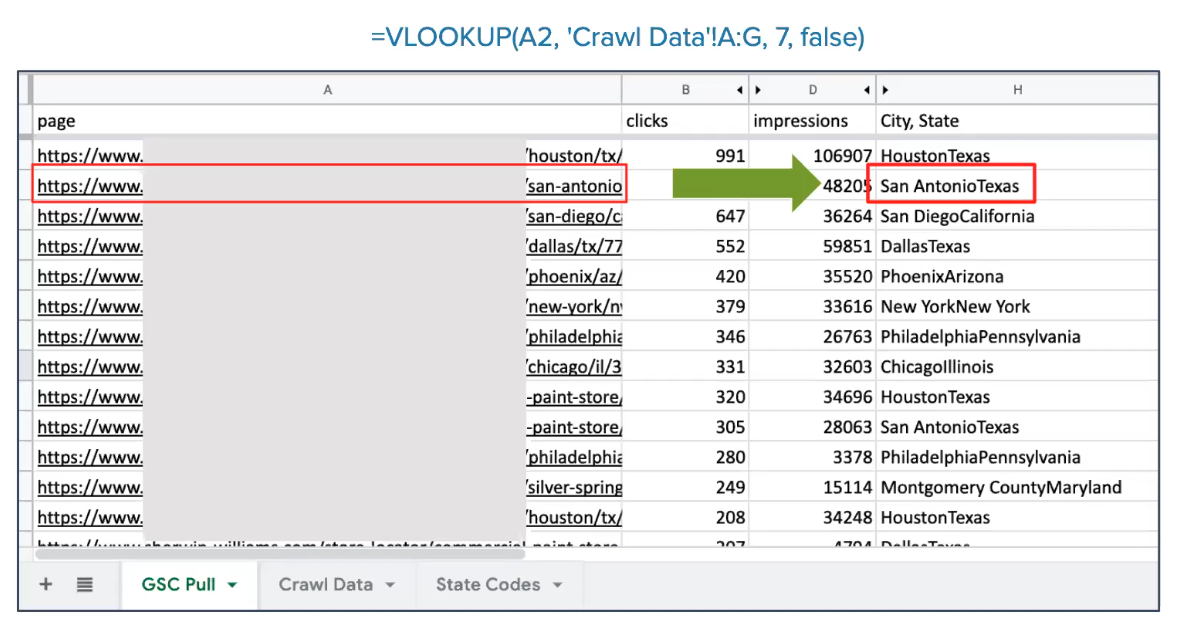
#5.
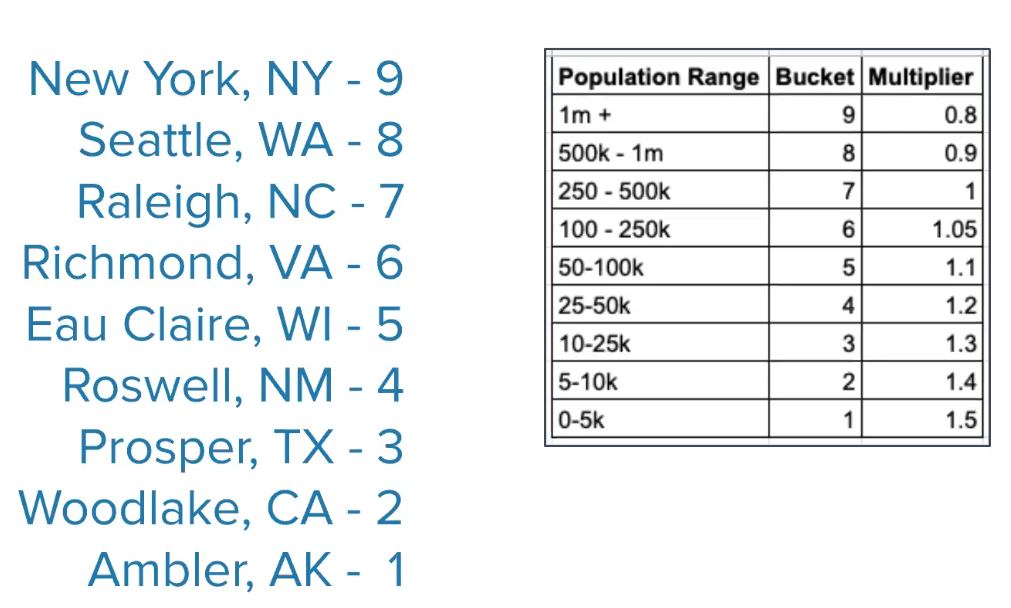 #6. Now create a new tab and pull in all the census data with the city, state, and population. You may need to clean up some of this information, so make sure you review it. Sometimes census data will add “village” after a city name and that can make your data a little messy. Sort population by highest to lowest. Next, manually add your Bucket and the multiplier values from your distribution model.
#6. Now create a new tab and pull in all the census data with the city, state, and population. You may need to clean up some of this information, so make sure you review it. Sometimes census data will add “village” after a city name and that can make your data a little messy. Sort population by highest to lowest. Next, manually add your Bucket and the multiplier values from your distribution model.
#7. Take the Bucket and Multiplier data and pull it into your GSC data tab.
***Your location pages are not always going to align with Census Data, you are going to have to do some manual cleanup. We’re looking for trends here, not perfection – this step can make you a bit crazy, so know when to stop.
#8. Create a new row for Adjusted Clicks = Clicks X Multiplier. You can also do this for impressions if you want to have adjusted impressions data.
#6.
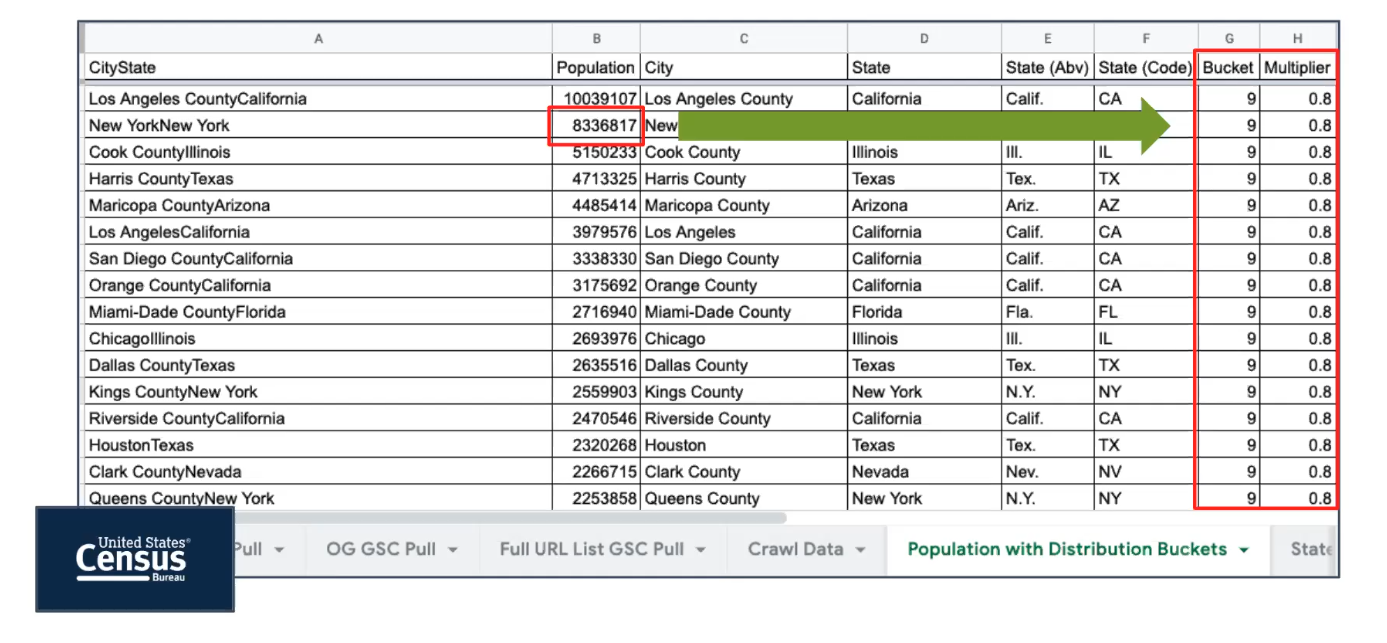
#7.
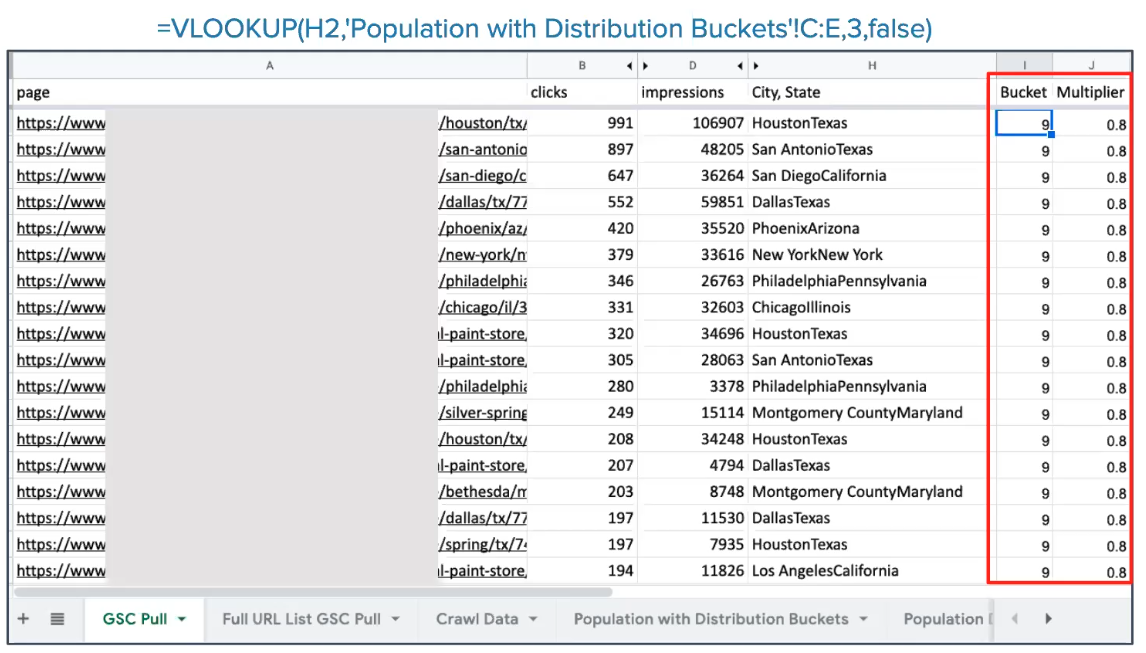
#8.
 What Have You Discovered?
What Have You Discovered?
Rachel is open to providing you with her census data (USA) if you DM her on Twitter – holy bananas that’s a lot of info. She invested 20 hours of time to collect, analyze, and prepare her technical audit. You are one lucky reader/#WLSS attendee.What’s Next?
Why not ask some questions to drill down further into your analysis.

Local search for hotels is completely different from other industries! When it comes to the local landscape for Hotels, ranking for “Hotel + Location” has always been tough. By its very nature, “hotel” is a competitive search term. But Google made it more difficult in 2018:
For hotels to succeed they need to interpret the user at the travel research stage of their journey. The two areas that hotels should focus on to win in local are:
Organic Results
Optimize for “Hotels + Location” for local and the hotel finder. Shift the internal focus to:
All of these areas can be ranked and are not subject to the same hyper local electric fence as hotel queries! Where it’s very difficult to rank for “Hotel + Location”, you can still rank for other opportunities and optimize for what sets you apart.
Accommodation
Here’s an example of a hotel in Phuket that couldn’t rank anymore in 2018 (after queries update) for “Hotel + Location”, but they were able to rank for their bedrooms and the types of accommodations available. 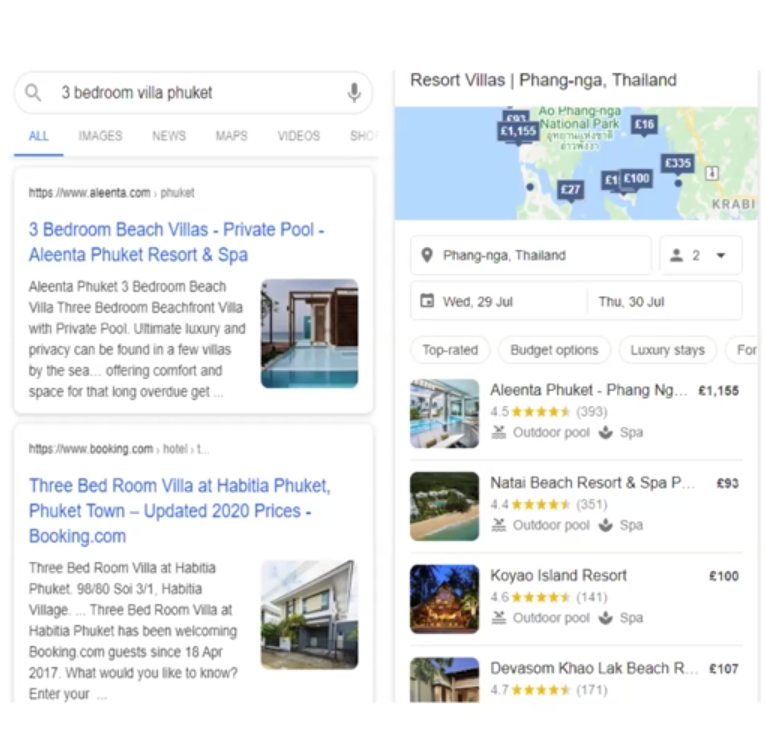 Leisure Facilities
Leisure Facilities
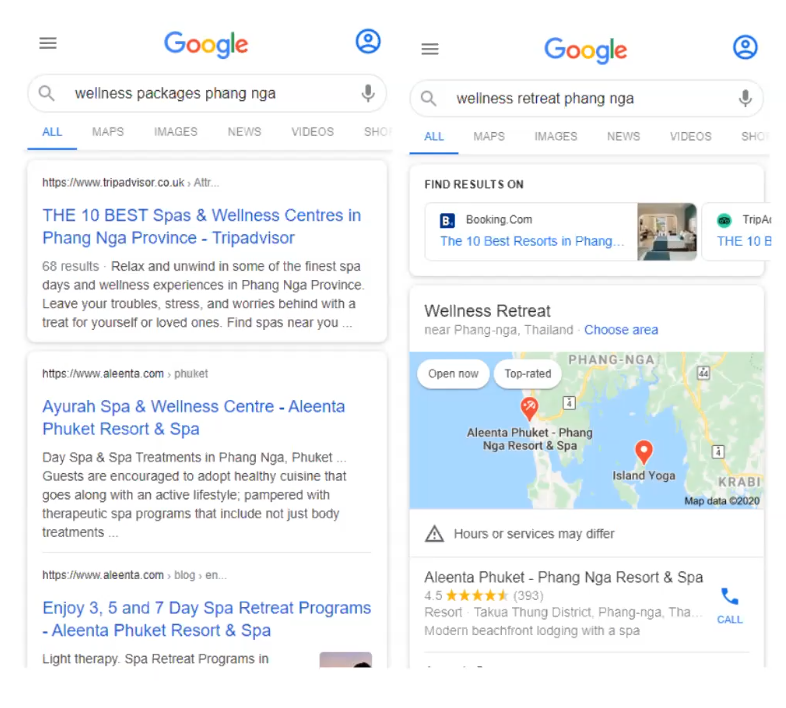 Weddings & Events
Weddings & Events
Food and Beverage
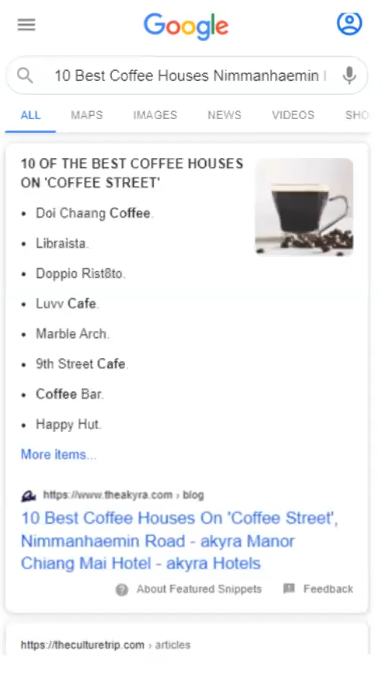 Local Supporting Content
Local Supporting Content
Think Big: Be the source of information for the area your property is located in. Rank for destination (location) and build your brand (reinforcing in location).
==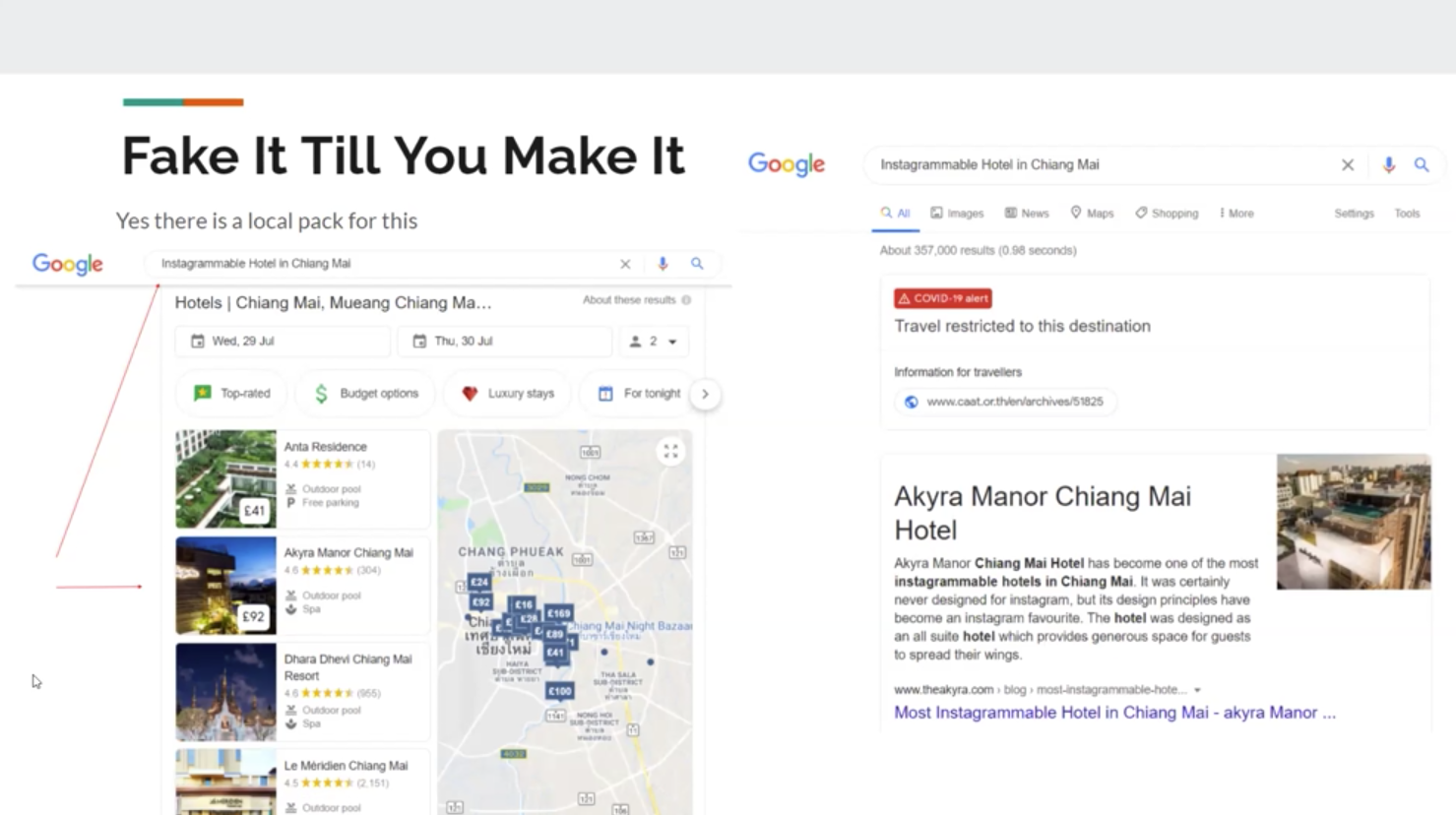 COVID Aftermath
COVID Aftermath
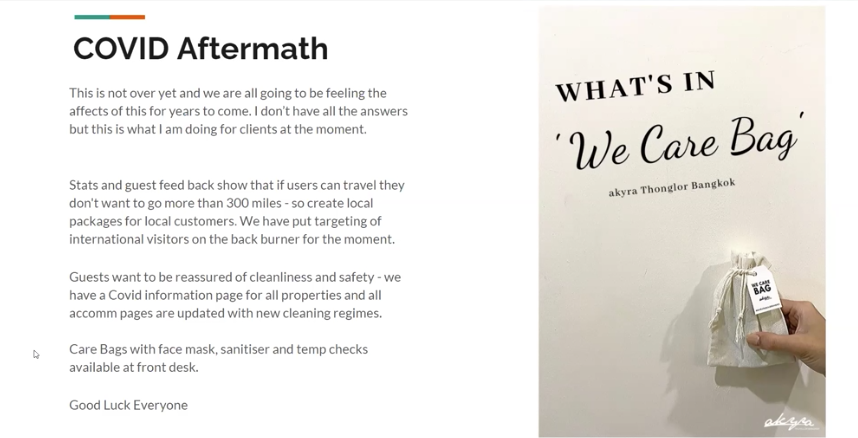 Get Your Hotels Listing Working for You
Get Your Hotels Listing Working for You
Google has 9 billion reasons not to allow hotels full access to Google My Business features that other businesses have access to!
==What Can You Do?
Benefit Your GMB
Make sure your hotel listing benefits from your website content and supporting local content.
Set Your Location
Attributes
Services
Photos
 Video
Video
Nest Your Locations
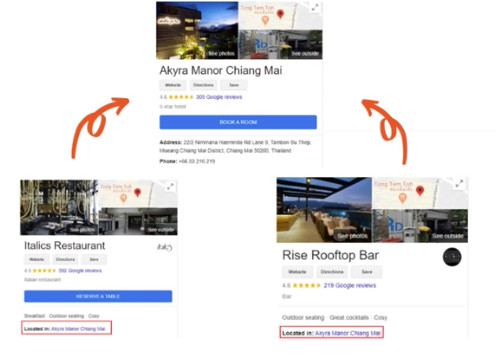 How Do You Nest a Business? Search for the business and in the profile, click “Suggest an edit”. If it doesn’t appear, you’ll need to contact business support. If you have already trained the location, the options will pre-populate for you!Cross Promote
How Do You Nest a Business? Search for the business and in the profile, click “Suggest an edit”. If it doesn’t appear, you’ll need to contact business support. If you have already trained the location, the options will pre-populate for you!Cross Promote
Go It Alone
Premier Inn is the only brand that has taken a stance against Other Travel Agencies/Sites (OTAs).

The 3 pillars of local search are:
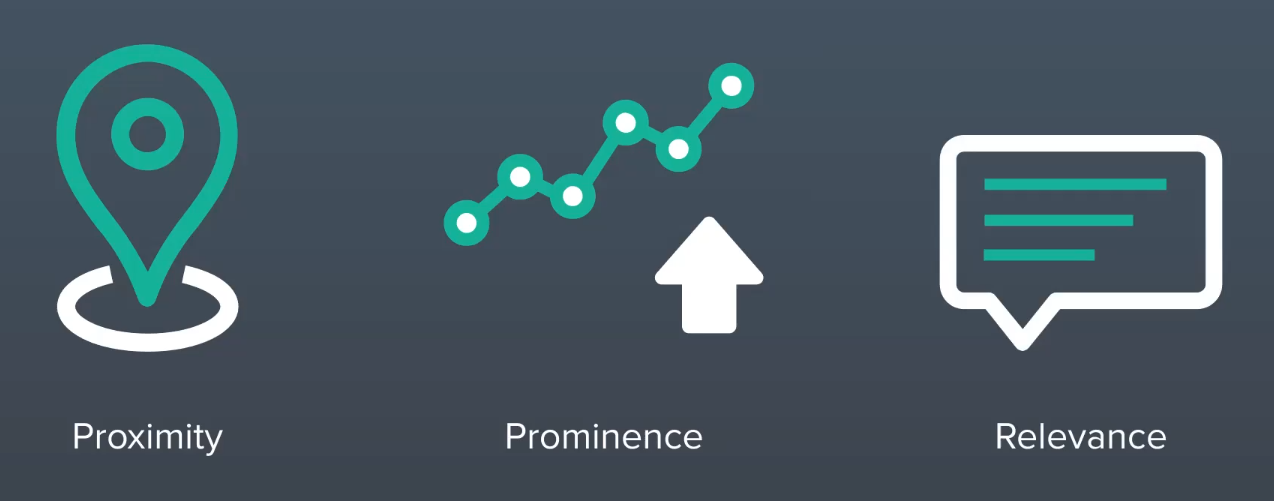 Proximity is your location that is the searcher’s location or location-modified searches (e.g. restaurants in New York). This proximity has to exist for local search to happen. Without proximity there is no local search.
Proximity is your location that is the searcher’s location or location-modified searches (e.g. restaurants in New York). This proximity has to exist for local search to happen. Without proximity there is no local search.
Prominence is how popular something is. When you think of ranking in web search, this is what we’re talking about. Same thing in local search, is this the most popular place to get sushi? Is this the best doctor that I can go to? Is this the best SEO I can find? All those signals that we make best, that’s what we are thinking about for prominence.
Relevance is the content that drives the search terms inside the context of prominence and proximity.
Relevance is the thing that we can control the most. Text content drives query matches – words matter. Without query matches the business won’t rank. When we think about proximity, you can’t control where the searcher is. You can change your location, but that’s very difficult. Prominence, if you’re a new business starting out, you really can’t compete in terms of prominence with other existing businesses – for example you’re a new doctor’s office, you put out a content piece, you won’t be able to compete with Mayo Clinic in terms of prominence. But you can drive relevance.
Content sources for relevance signals:
You can get by in the world of local search with relevance and proximity – without having prominence. These three relevance signals are all things you have control over.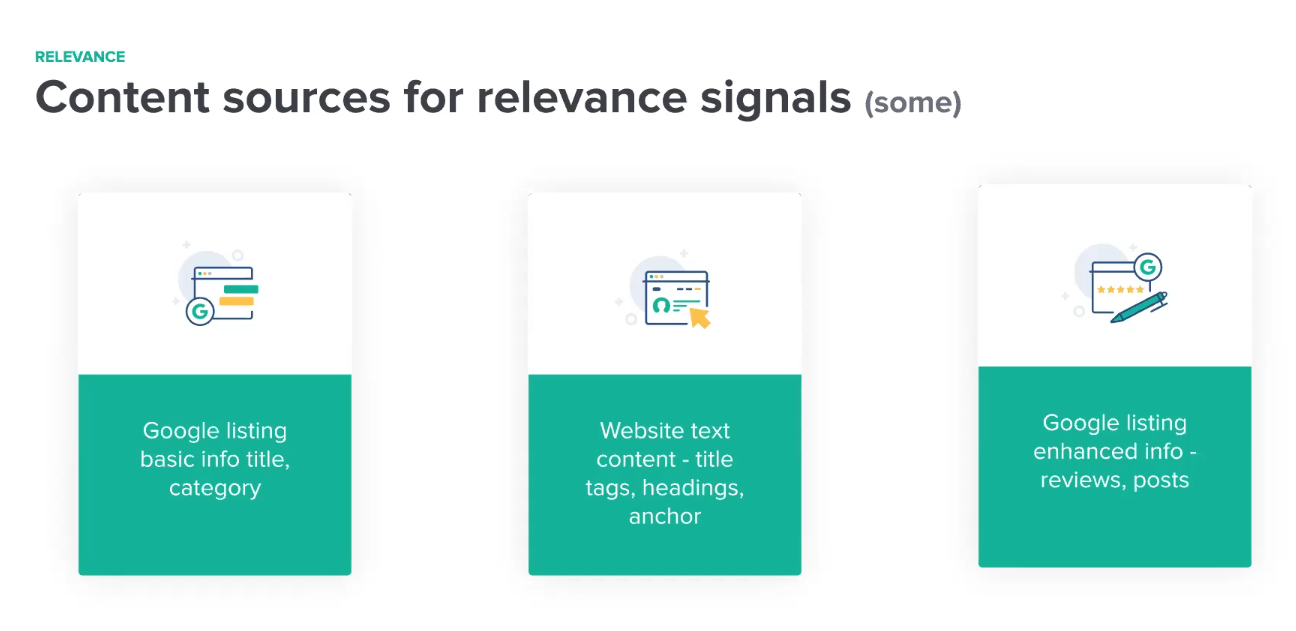 Title tags: THE on-page signal
Title tags: THE on-page signal
When you’re thinking about how much content you have on the page, how long the page should be, frequency of the keyword. Your title tags matter more than all of this stuff combined.
You can make a one word change in your title tag and get that page to rank for that word without changing any content.
Title Tag Length
Given that they are so important, there’s lots of dogma out there in the industry, the so-called “optimal” title tag length based on viewable titles on desktop web search (50-60 characters), and you have tools out there telling you are doing it wrong if your title tags are too long.
Mobile Title Tags Break This Title Tag Rule
When you look at mobile title tags they’re huge. Mobile results show longer titles, 3+ lines of text with 140+ characters. It just makes sense to think about how your customers and Google interact with your title tags.
==Title Tag Experiment
Are we actually getting value out of every word in the title tag? How do we find out? Joel ran an experiment to find the relevance of full length title tags.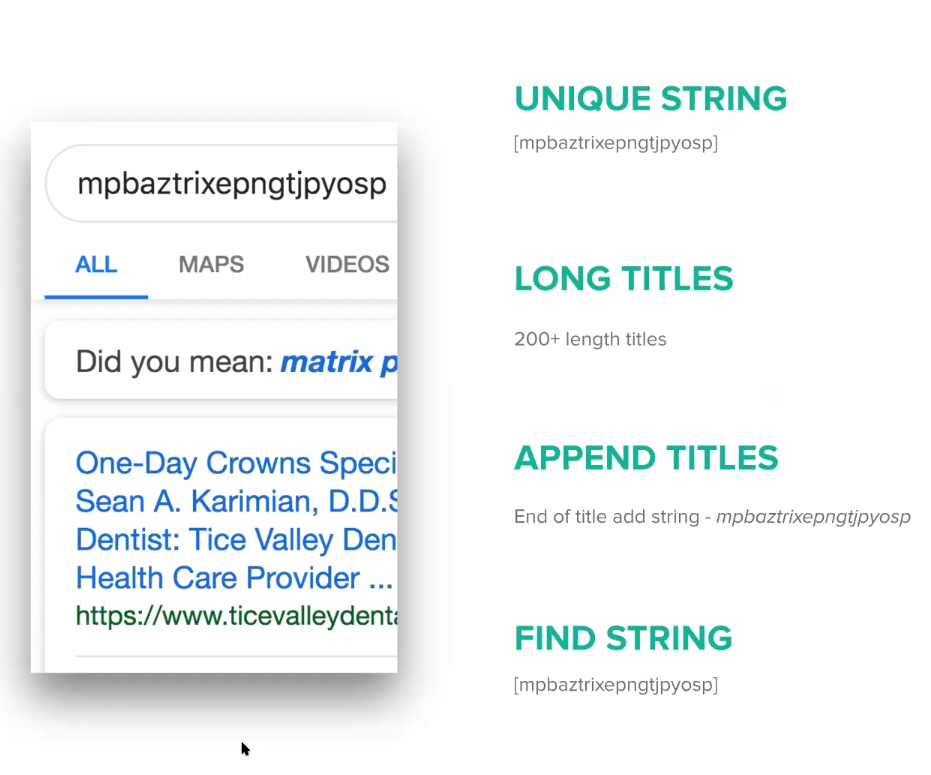
Findings
They did this with thousands of pages and their unique string/term showed up. In the past, it didn’t exist on Google, but now it does. It’s now returning the most prominent page for that search, but it’s really the relevance that brought it up. This means that you don’t have to fear that ellipsis (…) when it comes to your title tags. Even if you have the dot dot dot, even if you have some SEO tool from some big company that tells you that you shouldn’t have long title tags – that ellipsis is working for you! Everything behind that ellipsis is driving relevance in search.That ellipsis (…) in your long title tag is working for you! Ignore the SEO dogma of 50-60 character length title tags. Everything behind that ellipsis is driving relevance in search!How can we use this information to improve our search on Google?
Use localities to easily add content. A locality is taking a zip/postal code and pinging to the Google Places API and they return a structured result that includes a localities field. Localities are the areas that are included within the zip/postal code. Take the localities for your business zip/postal code location and shove them into your title tags. 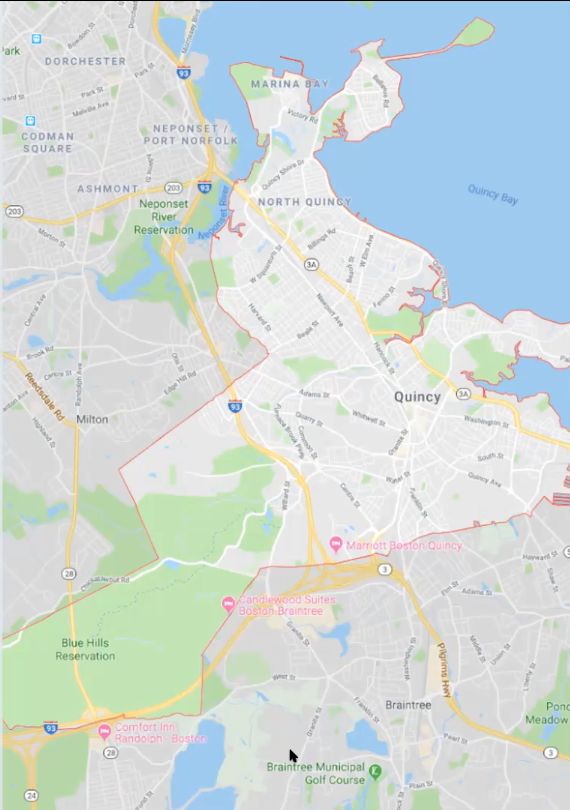 Joel and his team searched all localities within a zip/postal code and then added them to the end of existing title tags. They took information that was already known (Google knows you are already in this area based on your zip/postal code), so they’re not telling Google any additional or new information but rather doubling down on the information Google already has. Giving Google a clear signal that yes, we really are here!
Joel and his team searched all localities within a zip/postal code and then added them to the end of existing title tags. They took information that was already known (Google knows you are already in this area based on your zip/postal code), so they’re not telling Google any additional or new information but rather doubling down on the information Google already has. Giving Google a clear signal that yes, we really are here!
The team found that: the website appeared for 15% more keywords than previously, meaning they increased their visibility. Additionally, website rank increased 2 positions for current location for current web pages and terms they are already trying to rank. That’s relevance driving prominence. They were able to display more relevance, using preexisting prominence signals and Google is saying, “Hey we should show these pages because they are more relevant to the current search terms.”
Filling title tags with locations from the Maps resulted in:
Justifications On Google Search
A Justification is content highlighted in search = a feature at Google. Justifications are when you have a search term and Google highlights the words, for example in a meta description, that match the search terms. In search results, these display a “justification” to explain to the searcher why a particular result is chosen, highlighting the user’s search query. 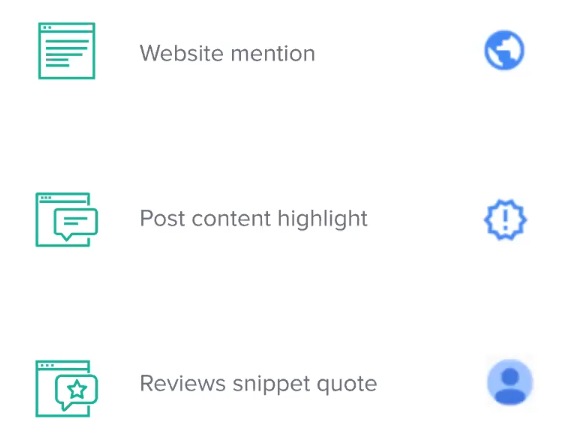 Justifications on Google Listings
Justifications on Google Listings
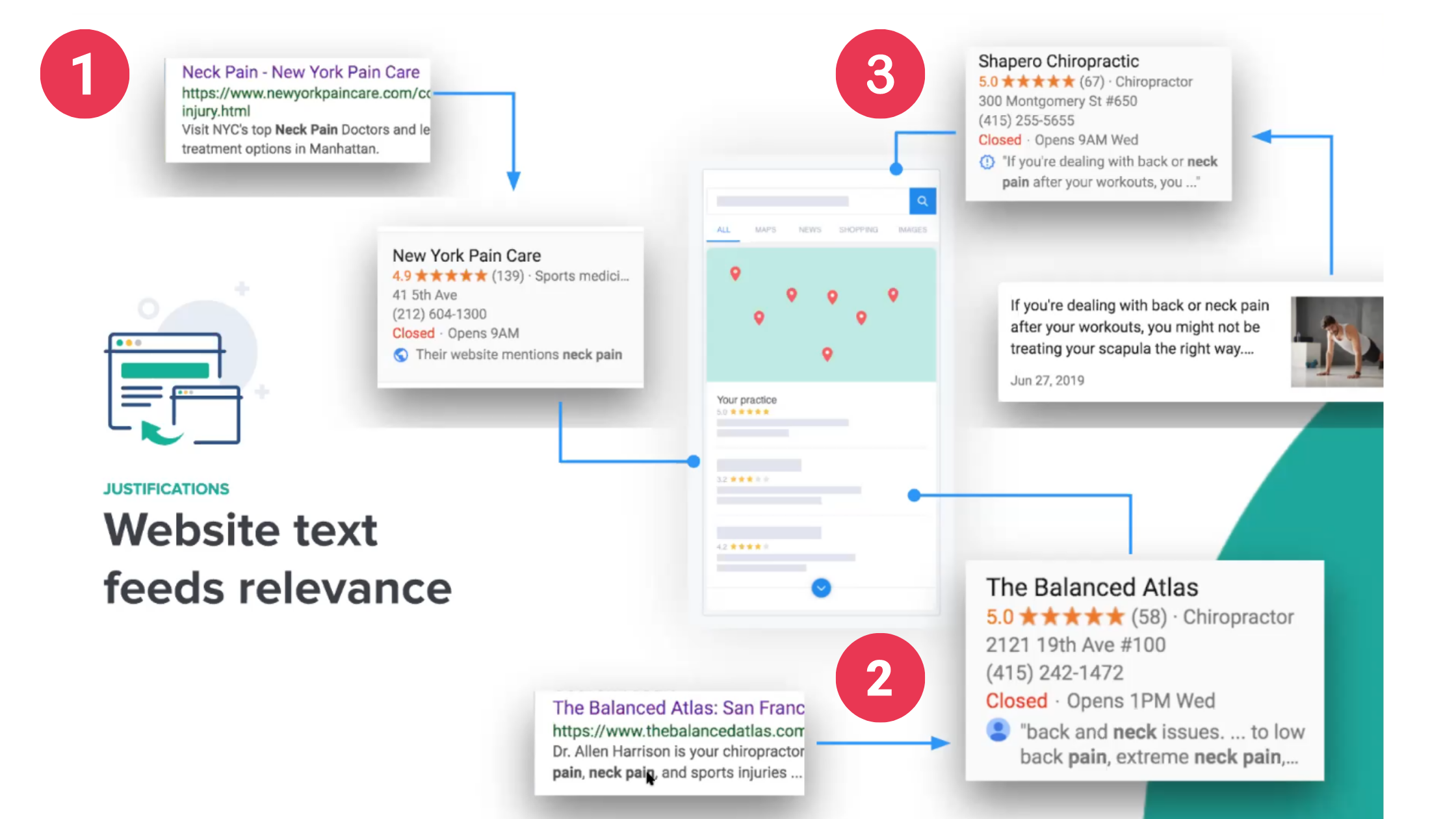
Relevance to search largely under your control:
Small Changes Drive Success – Remember:
Onsite Optimization Opportunities That Benefit Your GMB Listing
Google thinks of your Business Listing as any other knowledge entity out there. You are a business that has a website that has contact information. Add your localities to your title tags on your homepage and contact page, without having to invest more time in creating new location pages. The major signals Google is looking for are: Anchor text, headings, and title tags and if you get these right you can get 80% of the benefits.

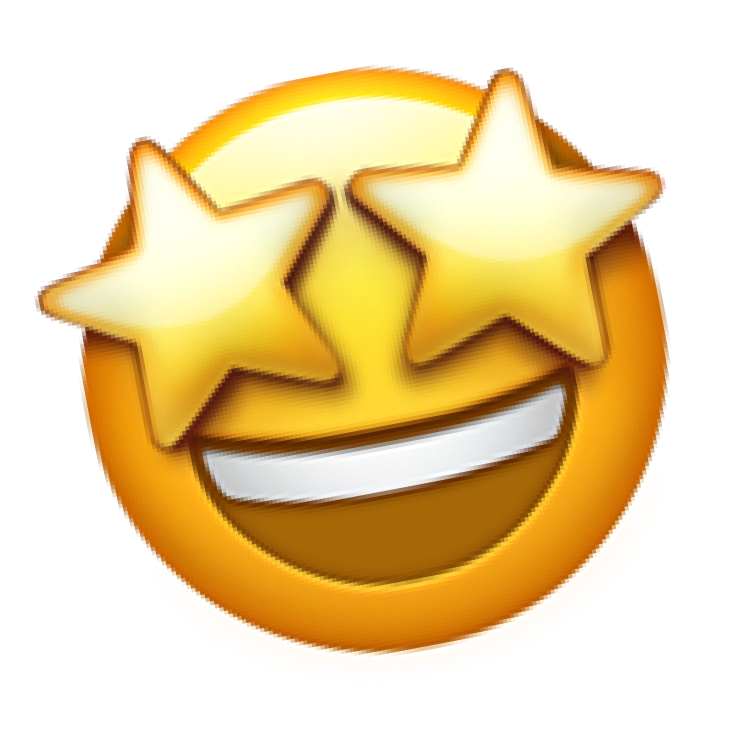
Whitespark provides powerful software and expert services to help businesses and agencies drive more leads through local search.
Founded in 2005 in Edmonton, Alberta, Canada, we initially offered web design and SEO services to local businesses. While we still work closely with many clients locally, we have successfully grown over the past 20 years to support over 100,000 enterprises, agencies, and small businesses globally with our cutting-edge software and services.